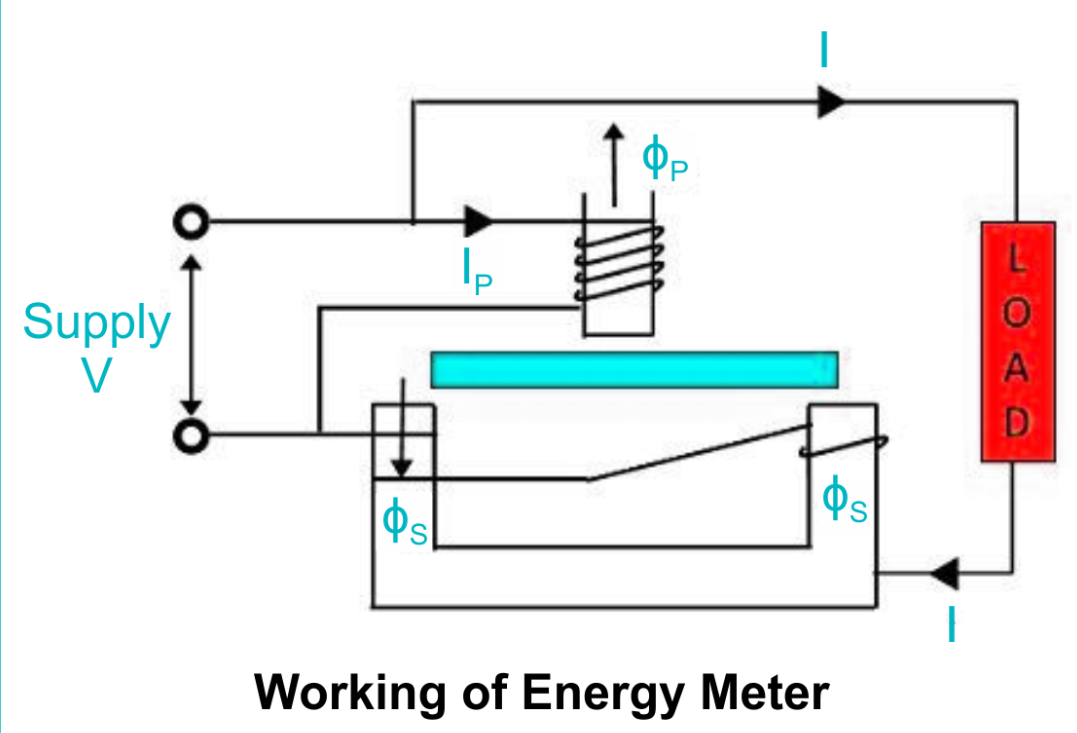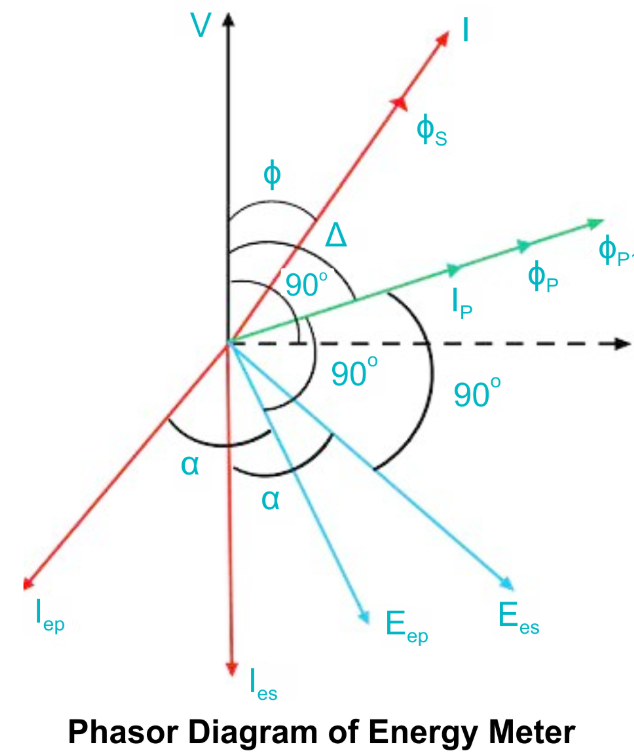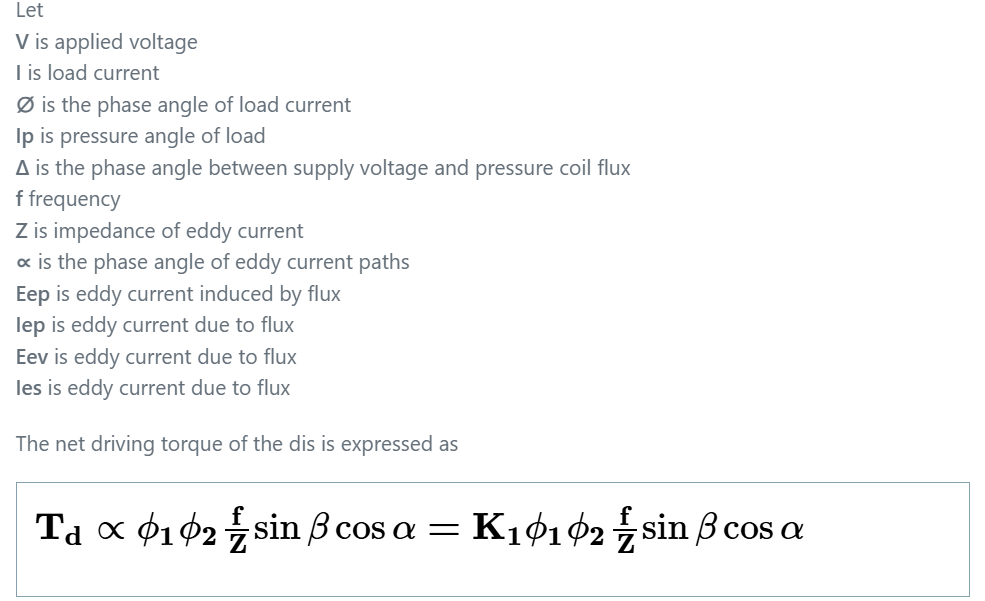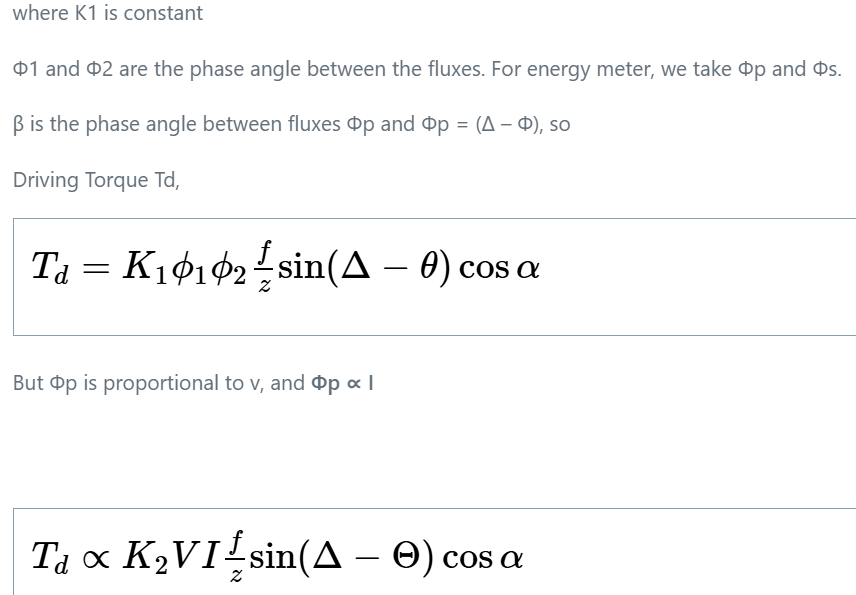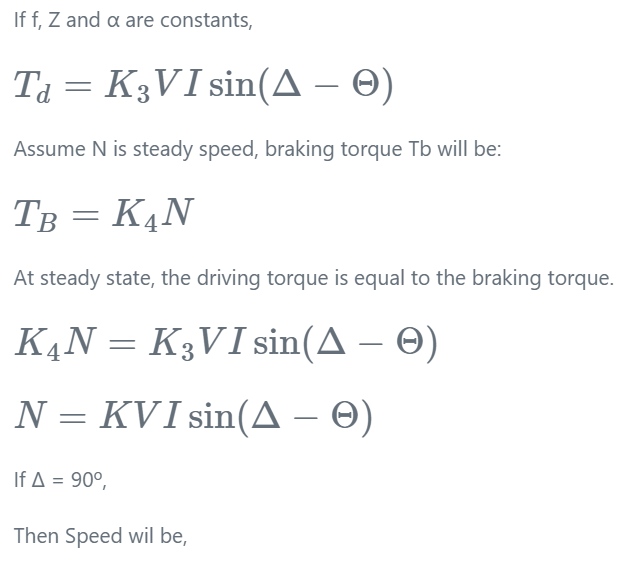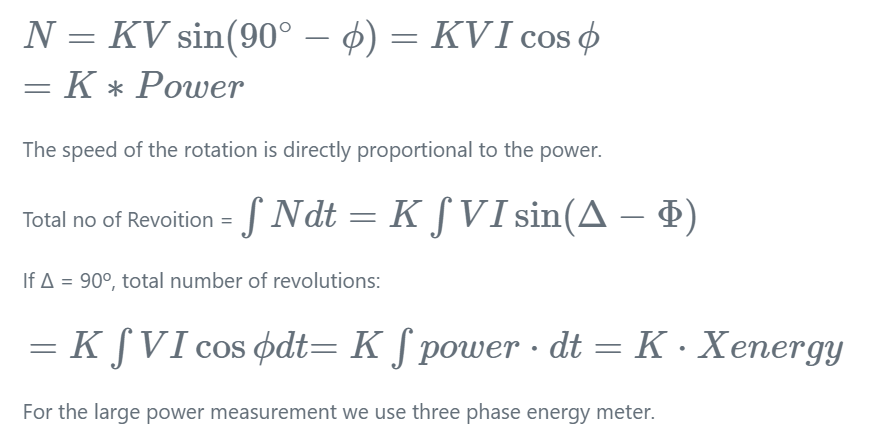ELE Times
New edge AI-enabled radar sensor and automotive audio processors from TI empower automakers to reimagine in-cabin experiences
Texas Instruments (TI) today introduced new integrated automotive chips to enable safer, more immersive driving experiences at any vehicle price point. TI’s AWRL6844 60GHz mmWave radar sensor supports occupancy monitoring for seat belt reminder systems, child presence detection and intrusion detection with a single chip running edge AI algorithms, enabling a safer driving environment. With TI’s next-generation audio DSP core, the AM275x-Q1 MCUs and AM62D-Q1 processors make premium audio features more affordable. Paired with TI’s latest analog products, including the TAS6754-Q1 Class-D audio amplifier, engineers can take advantage of a complete audio amplifier system offering. TI is showcasing these devices at the 2025 Consumer Electronics Show (CES), Jan. 7-10, in Las Vegas, Nevada.
“Today’s drivers expect any car – entry-level to luxury, combustion to electric – to have enhanced in-cabin experiences,” said Amichai Ron, senior vice president, TI Embedded Processing. “TI continues to provide innovative technologies to enable the future of the automotive driving experience. Our edge AI-enabled radar sensors allow automakers to make vehicles safer and more responsive to the driver, while our audio systems-on-chip elevate the drive through more immersive audio. Together they create a whole new level of in-cabin experiences.”
Edge AI-enabled, three-in-one radar sensor increases detection accuracyOriginal equipment manufacturers (OEMs) are gradually designing in more sensors to enhance the in-vehicle experience and meet evolving safety standards. TI’s edge AI-enabled AWRL6844 60GHz mmWave radar sensor enables engineers to incorporate three in-cabin sensing features to replace multiple sensor technologies, such as in-seat weight mats and ultrasonic sensors, lowering total implementation costs by an average of US$20 per vehicle.
The AWRL6844 integrates four transmitters and four receivers, enabling high-resolution sensing data at an optimized cost for OEMs. This data feeds into application-specific AI-driven algorithms on a customizable on-chip hardware accelerator and DSP, improving decision-making accuracy and reducing processing time. The edge intelligence capabilities of the AWRL6844 sensor that help improve the driving experience include these examples:
- While driving, it supports occupant detection and localization with 98% accuracy to enable seat belt reminders.
- After parking, it monitors for unattended children in the vehicle, using neural networks that detect micromovements in real time with over 90% classification accuracy. This direct sensing capability enables OEMs to meet 2025 European New Car Assessment Program (Euro NCAP) design requirements.
- When parked, it adapts to different environments through intelligent scanning, reducing false intrusion detection alerts caused by car shaking and external movement.
To learn more, read the technical article, “Reducing In-Cabin Sensing Complexity and Cost with a Single-Chip 60GHz mmWave Radar Sensor.”
Deliver premium automotive audio with TI’s complete audio portfolioAs driver expectations grow for elevated in-cabin experiences across vehicle models, OEMs aim to offer premium audio while minimizing design complexity and system cost. AM275x-Q1 MCUs and AM62D-Q1 processors reduce the number of components required for an automotive audio amplifier system by integrating TI’s vector-based C7x DSP core, Arm cores, memory, audio networking and a hardware security module into a single, functional safety-capable SoC. The C7x core, coupled with a matrix multiply accelerator, together form a neural processing unit that processes both traditional and edge AI-based audio algorithms. These automotive audio SoCs are scalable, allowing designers to meet memory and performance needs, from entry-level to high-end systems, with minimal redesign and investment.
TI’s next-generation C7x DSP core achieves more than four times the processing performance of other audio DSPs, allowing audio engineers to manage multiple features within a single core. AM275x-Q1 MCUs and AM62D-Q1 processors enable immersive audio inside the cabin with features such as spatial audio, active noise cancellation, sound synthesis and advanced vehicle networking, including Audio Video Bridging over Ethernet.
“Dolby’s longtime collaboration with Texas Instruments has enabled incredible audio experiences in the home, which we’re now bringing into the car,” said Andreas Ehret, senior director of Automotive Business at Dolby Laboratories. “With TI’s C7x DSP core, we can now deliver the latest Dolby Atmos capabilities more efficiently, including support for even smaller form factor audio systems so nearly all vehicles can have Dolby Atmos. Together, these products can help turn every car ride into an immersive entertainment experience.”
To further optimize their automotive audio designs, engineers can use TI’s TAS6754-Q1 audio amplifier with innovative 1L modulation technology to deliver class-leading audio performance and power consumption, with half the number of inductors compared to existing Class-D amplifiers. The TAS67xx-Q1 family of devices, which integrates real-time load diagnostics required by OEMs, helps engineers simplify designs, decrease costs, and increase efficiency without sacrificing audio quality.
The post New edge AI-enabled radar sensor and automotive audio processors from TI empower automakers to reimagine in-cabin experiences appeared first on ELE Times.
Energy Meter Definition, Types, Working, Construction & Diagram
An energy meter is a device that measures the electrical energy consumption in homes, commercial establishments, or industrial settings. It records the total energy usage, usually in kilowatt-hours (kWh), which is then used to calculate electricity bills. Energy meters play a vital role in managing energy consumption, ensuring accurate billing, and supporting energy efficiency measures. They are an essential part of modern electrical systems and are commonly found in homes, offices, factories, and other establishments.
Types of Energy Meters
Energy meters are classified into several types based on their design, application, and method of measurement. Here are the main types:
- Electromechanical Energy Meters (Analog Meters): These meters are the traditional type and have been in use for many years. They operate using a mechanical movement, which is driven by the flow of current. The meter features a rotating disc that spins as a result of the current flowing through it. The movement of the disc turns the dials, indicating the amount of electrical energy consumed. While they are durable and reliable, they have limitations such as less precision, difficulty in remote reading, and susceptibility to tampering.
- Electronic Energy Meters (Digital Meters): Electronic energy meters are more advanced and have largely replaced electromechanical meters in modern systems. They use digital technology to measure and record energy consumption. These meters consist of a microcontroller that processes the input from voltage and current sensors and displays the energy consumed on a digital screen. Digital meters offer greater accuracy, easy integration with remote reading systems, and are tamper-resistant.
- Smart Energy Meters: Smart energy meters are a newer, advanced type of digital meter that not only measure energy consumption but also allow for two-way communication between the meter and the utility company. These meters enable utilities to monitor usage in real-time, track energy trends, and even remotely disconnect or reconnect the service. Smart meters play a critical role in modern smart grids, helping consumers optimize energy usage and improving grid management.
- Prepaid Energy Meters: These meters are commonly used in locations where consumers wish to pay for energy before using it. The consumer credits the meter with a certain amount of energy, and once the credit is used up, the supply is disconnected. Prepaid meters are widely used in residential areas and allow for better control over energy costs.
- Three-Phase Energy Meters: These meters are used for measuring energy consumption in three-phase electrical systems, which are commonly found in industrial and commercial applications. Three-phase energy meters are more intricate and designed to manage larger electrical loads. They provide accurate measurements of energy consumption in systems with multiple phases.
Working Principle of Energy Meter
The working principle of an energy meter involves the conversion of electrical energy into mechanical energy or directly into a digital signal. The operating principle differs based on the type of meter used. Here is a basic explanation of the working principles for electromechanical and electronic energy meters:
- Electromechanical Energy Meter:
- Electromagnetic Induction: The core working principle of electromechanical meters is electromagnetic induction. When current flows through a conductor placed in a magnetic field, it experiences a force that makes it move. In an energy meter, the current-carrying coil is placed in the magnetic field created by a permanent magnet or another coil, causing a rotating disc.
- Rotation of Disc: The speed at which the disc rotates is proportional to the power consumed. This rotation is mechanically linked to the dials or counters that indicate the energy usage.
- Friction Brake: A brake mechanism is applied to the disc to limit its speed, ensuring that it does not rotate too quickly, and the readings remain accurate.
- Electronic Energy Meter:
- Voltage and Current Sensing: Electronic meters use voltage and current sensors to continuously measure the electrical parameters of the system.
- Digital Conversion: The measured analog signals (voltage and current) are fed into an analog-to-digital converter (ADC) that transforms the continuous signals into discrete digital signals.
- Microcontroller Processing: A microcontroller processes the digital signals, calculating the energy consumed in real-time. The calculated data is shown on a digital display and saved for later reference.
Construction of an Energy Meter
The construction of an energy meter can vary depending on the type (electromechanical, electronic, or smart). However, the general components include the following:
- Current Coil: This coil is placed in series with the load and carries the current to be measured. It generates a magnetic field that interacts with the magnetic field of the voltage coil, producing a mechanical torque in the case of electromechanical meters.
- Voltage Coil: The voltage coil produces a magnetic field that interacts with the one created by the current coil. The voltage coil generates a magnetic field that interacts with the magnetic field produced by the current coil.
- Rotating Disc (for electromechanical meters): The current and voltage coils generate a magnetic field that induces a torque on a metal disc. The disc rotates, and the speed of rotation is proportional to the power consumption. The mechanical motion of the disc drives the dials to display the energy used.
- Digital Display (for electronic meters): Instead of mechanical dials, electronic energy meters have a digital display that shows the energy consumption in numerical form. A microcontroller processes the data to update the display in real-time.
- Mechanical Dials: In older electromechanical meters, the disc’s motion is linked to a set of dials or gears that indicate the energy usage.
- Brake Mechanism: A friction brake mechanism is applied to slow down the rotation of the disc in electromechanical meters, ensuring the meter measures the energy consumption accurately.
- Transformer (optional): In some energy meters, especially for higher voltage systems, transformers are used to step down the voltage to safe, measurable levels.
Energy Meter Phasor Diagram
The phasor diagram is a graphical representation of the relationship between the voltage and current waveforms in an AC circuit. For energy meters, phasor diagrams help in understanding how the current and voltage are related, which is essential for accurate energy measurement.
In a typical AC circuit, the voltage and current waveforms are sinusoidal but may be out of phase. The angle between the voltage and current phasors indicates the phase difference. For active power (real power), the voltage and current are in phase, and the power factor is unity (1). However, in most practical cases, the current and voltage are not perfectly in phase due to inductive or capacitive components, leading to a power factor less than 1.
The energy meter measures the product of voltage and current over time, which is then displayed as the energy consumption. The phase difference between the current and voltage is critical, as it influences the calculation of the true power (active power) that the energy meter records.
Conclusion
Energy meters are indispensable tools in modern electrical systems, providing accurate measurement and monitoring of electrical energy usage. Whether electromechanical, electronic, or smart meters, they all serve the primary function of measuring electrical consumption. Understanding the construction, working principles, and types of energy meters helps consumers and utilities optimize energy management and ensure efficient billing practices. Phasor diagrams are a useful tool in understanding the relationship between voltage and current, aiding in accurate energy measurement, particularly in AC circuits.
The post Energy Meter Definition, Types, Working, Construction & Diagram appeared first on ELE Times.
Analog IC vs Digital IC – Difference and Comparison
Integrated circuits (ICs) have revolutionized modern electronics, serving as the backbone of countless devices. Broadly, ICs are categorized into two main types: Analog ICs and Digital ICs. Understanding their differences and specific applications is essential for selecting the right components for various electronic systems. This article delves into the distinctions and comparisons between analog and digital ICs, highlighting their respective advantages, limitations, and use cases.
What are Analog ICs?
Analog ICs process continuous signals that vary over time and are used to manage real-world data such as sound, light, temperature, or pressure. These integrated circuits are crucial in scenarios that demand high precision and uncompromised signal quality.
Key Features of Analog ICs:
- Continuous Signal Processing: Operate with signals that have infinite values within a range.
- Signal Amplification and Conditioning: Amplify or modify analog signals for further processing.
- High Sensitivity: Analog ICs are ideal for handling small changes in signal amplitude.
Common Examples:
- Operational amplifiers (op-amps)
- Voltage regulators
- Analog-to-digital converters (ADCs)
- Audio amplifiers
What are Digital ICs?
Digital integrated circuits process discrete signals, encoding information in binary format, where data is represented as sequences of 0s and 1s. These ICs are integral to modern computing and communication systems.
Key Features of Digital ICs:
- Binary Signal Processing: Work with two distinct states, high (1) and low (0).
- Logical Operations: Perform arithmetic, logical, and control operations efficiently.
- Noise Immunity: Digital ICs demonstrate greater resilience to noise, making them more reliable in environments with high interference.
Common Examples:
- Microprocessors
- Memory chips (RAM, ROM)
- Logic gates
- Digital-to-analog converters (DACs)
Comparison Between Analog ICs and Digital ICs
| Aspect | Analog IC | Digital IC |
| Signal Type | Continuous signals | Discrete signals (binary) |
| Processing | Processes real-world, variable data | Processes binary data |
| Complexity | Simpler design | Higher complexity in circuits |
| Noise Sensitivity | More vulnerable to interference and distortions | More resistant to interference and noise disruptions |
| Applications | Audio, sensors, signal conditioning | Computing, storage, digital communication |
| Power Consumption | Generally higher for amplifiers | Lower for logic circuits |
| Accuracy | Depends on precision of components | High for binary operations |
| Speed | Limited by signal amplitude and frequency | Faster due to digital switching |
Hybrid ICs: Bridging the Gap
Modern systems often necessitate a combination of both analog and digital capabilities to function seamlessly. For instance, smartphones rely on analog ICs for signal acquisition (microphones, cameras) and digital ICs for processing (processors, memory). Hybrid ICs, which combine analog and digital components, are increasingly popular for such integrated applications.
Example:
- Analog-to-Digital Converters (ADCs) convert continuous analog inputs into a digital format, enabling their use in computational and processing systems.
- Digital-to-Analog Converters (DACs) take processed digital data and convert it back into analog signals for practical, real-world output.
Applications of Analog ICs
- Audio Equipment: Analog amplifiers and equalizers enhance sound quality in audio systems.
- Power Management: Voltage regulators and power amplifiers manage and stabilize power supplies.
- Sensors and Instrumentation: Analog ICs process data from temperature, pressure, and motion sensors.
Applications of Digital ICs
- Computing Devices: Microprocessors and memory chips drive computers and smartphones.
- Communication Systems: Digital signal processors (DSPs) enable data encoding, modulation, and transmission.
- Automation and Control: Logic circuits and microcontrollers power robotics and industrial automation.
Advantages and Disadvantages
Analog ICs:
- Advantages:
- Superior for real-world signal processing.
- Ideal for use in scenarios where maintaining high signal accuracy and integrity is essential.
- Disadvantages:
- More susceptible to interference and signal degradation.
- Larger power consumption for certain tasks.
Digital ICs:
- Advantages:
- High accuracy and noise immunity.
- Efficient for high-speed operations and complex computations.
- Disadvantages:
- Limited in handling real-world signals directly.
- Conversion to and from analog signals may introduce delays.
Conclusion
Analog and digital ICs serve distinct yet complementary roles in modern electronics. While analog ICs excel in processing real-world signals with precision, digital ICs dominate areas requiring speed, accuracy, and computational power. The synergy of these technologies, often realized in hybrid ICs, is driving innovation across industries such as healthcare, automotive, consumer electronics, and communication. Understanding the strengths and limitations of each type enables engineers and designers to create optimized and efficient electronic systems tailored to specific applications.
The post Analog IC vs Digital IC – Difference and Comparison appeared first on ELE Times.
Exploring Space with Next-Gen Satellites and Electronics
The relentless pursuit of space exploration has always been a testament to humanity’s desire to push the boundaries of what’s possible. From the earliest satellite launches to interplanetary missions, the technological advances driving these achievements are nothing short of revolutionary. Among these, next-generation satellites and cutting-edge electronics are at the forefront, enabling unprecedented capabilities in communication, observation, and exploration.
The Evolution of Satellite Technology
The journey of satellite technology began in 1957 with the launch of Sputnik 1, a rudimentary metal sphere weighing just 83.6 kilograms. Since then, satellites have evolved from basic communication devices to complex systems that underpin modern society. Today’s satellites are miniature marvels, integrating advanced materials, AI-driven systems, and versatile designs to meet a myriad of demands.
- Miniaturization and Cost Reduction: With advancements in microelectronics and manufacturing techniques, the size and cost of satellites have drastically decreased. CubeSats and nanosatellites, often no larger than a shoebox, are increasingly common, democratizing space access for academic institutions, startups, and developing nations.
- Increased Functionality: Modern satellites boast multi-functional capabilities, combining Earth observation, weather monitoring, and communication tasks in a single platform.
- Enhanced Durability: New materials and radiation-resistant electronics extend satellite lifespans, reducing the frequency and cost of replacements.
Cutting-Edge Electronics in Space Exploration
The electronics onboard spacecraft are critical to their success, operating in extreme conditions of temperature, radiation, and vacuum. Next-generation electronic systems are pushing the boundaries of what’s feasible in these harsh environments.
- Radiation-Hardened Components: Space electronics are designed to withstand intense radiation and high-energy particles. Innovations in semiconductor manufacturing, such as gallium nitride (GaN) and silicon carbide (SiC) technologies, enhance performance while ensuring reliability.
- AI and Edge Computing: Artificial Intelligence (AI) empowers satellites to operate independently by analyzing data and making decisions on the fly, significantly reducing dependency on ground control
- Energy Efficiency: Power consumption is a critical factor in space. Advances in low-power processors and energy-harvesting technologies, like solar arrays and thermal converters, ensure sustainable operations.
Transformative Applications of Next-Gen Satellites
The advancements in satellite technology and electronics have unlocked transformative applications across industries and domains. Here are some key domains impacted:
- Global Connectivity: Initiatives like SpaceX’s Starlink and OneWeb aim to provide high-speed internet access to even the most remote areas, bridging the digital divide and fostering economic growth.
- Earth Observation: Satellites equipped with high-resolution cameras and advanced sensors are pivotal for environmental monitoring, disaster response, and agricultural optimization.
- Space-Based Navigation: Next-gen satellites improve the accuracy and reliability of Global Navigation Satellite Systems (GNSS), enhancing applications from autonomous vehicles to precision farming.
- Deep Space Missions: Advanced electronics enable missions to Mars, asteroids, and beyond, with improved data transmission rates, robust hardware, and autonomous systems to handle the challenges of interplanetary travel.
Latest Case Studies
Recent case studies highlight the real-world impact of next-gen satellites and electronics. For instance, the European Space Agency’s (ESA) Copernicus Sentinel program uses cutting-edge satellites to monitor climate change, providing invaluable data for policymakers worldwide. Similarly, NASA’s Perseverance rover, equipped with advanced electronic systems, has been exploring Mars, collecting samples, and sending high-definition images back to Earth. Another example is SpaceX’s Starlink constellation, which has successfully deployed over 5,000 satellites, revolutionizing global broadband connectivity and demonstrating the scalability of modern satellite networks.
Challenges and Innovations
Despite these advancements, the journey toward next-gen satellites and electronics is not without challenges. Addressing these hurdles requires innovative solutions and collaborative efforts.
- Thermal Management: Extreme temperatures in space necessitate effective thermal management systems. Novel materials and phase-change technologies are being developed to dissipate heat efficiently.
- Space Debris Mitigation: The proliferation of satellites increases the risk of collisions and debris generation. Technologies like satellite-servicing robots, deorbiting mechanisms, and enhanced tracking systems are crucial for sustainable space operations.
- Data Security: As satellites become integral to global infrastructure, they face growing cybersecurity threats. Implementing quantum encryption and blockchain technology can enhance security.
- Supply Chain Constraints: The demand for specialized components, coupled with geopolitical factors, poses challenges to satellite production. Investments in domestic manufacturing and diversified sourcing are essential.
The Role of AI and Machine Learning
AI and Machine Learning (ML) are revolutionizing how satellites operate and interact with their environments. From autonomous navigation to predictive maintenance, these technologies are key enablers of next-gen satellite capabilities.
- Autonomous Navigation: AI algorithms allow satellites to adjust their orbits and avoid collisions autonomously, ensuring operational continuity.
- Predictive Maintenance: ML models analyze telemetry data to predict and prevent system failures, extending satellite lifespans.
- Dynamic Tasking: AI enables satellites to prioritize tasks based on real-time data, optimizing resource utilization.
Collaboration and the Future
The development of next-generation satellites and electronics is a global endeavor, with governments, private companies, and academic institutions contributing to the effort. Collaborative initiatives like NASA’s Artemis program, ESA’s Earth Observation missions, and ISRO’s Chandrayaan projects exemplify the collective drive to explore space.
The private sector also plays a pivotal role. Companies like SpaceX, Blue Origin, and Rocket Lab are not only advancing satellite technology but also redefining space transportation and logistics. Meanwhile, electronics giants are investing heavily in research and development to create components tailored for space applications.
Conclusion
Next-generation satellites and electronics are the backbone of modern space exploration and utilization. They enable groundbreaking applications, from global connectivity to interplanetary missions, while addressing challenges with innovative solutions. As humanity continues to explore the cosmos, the synergy between satellite technology and advanced electronics will undoubtedly shape the future of space exploration and its benefits for life on Earth.
The post Exploring Space with Next-Gen Satellites and Electronics appeared first on ELE Times.
Human Augmentation Tech: Bridging Electronics and Biology
In recent years, human augmentation technology has transitioned from science fiction to an exciting frontier of innovation. Bridging the gap between electronics and biology, this emerging field holds the promise to enhance human capabilities, address disabilities, and redefine our relationship with technology. By integrating advanced electronics into the human body, researchers and engineers are unlocking unprecedented possibilities in healthcare, communication, and even daily life.
Understanding Human AugmentationHuman augmentation refers to the application of technology to enhance or restore physical, cognitive, and sensory abilities. These enhancements can be divided into three broad categories:
- Physical Augmentation: Technologies that enhance physical strength, mobility, or endurance. Examples include exoskeletons and prosthetics.
- Cognitive Augmentation: Tools that boost mental capabilities such as memory, problem-solving, and learning.
- Sensory Augmentation: Devices that enhance or restore sensory perception, such as hearing aids, cochlear implants, or visual prostheses.
- Prosthetics and Bionics
Advanced prosthetics and bionic devices are redefining what it means to live with a disability. Prosthetic limbs equipped with sensors and actuators can replicate natural movements, while neural interfaces enable users to control these devices using brain signals. For instance, DARPA’s Brain-Machine Interface (BMI) program has developed prosthetics capable of providing tactile feedback, offering users a sense of touch.
- Exoskeletons
Exoskeletons are wearable devices that augment strength and mobility. Used in industries such as healthcare, military, and manufacturing, these devices reduce physical strain and assist individuals with mobility impairments. Companies like Ekso Bionics and ReWalk Robotics are leading the way in commercializing exoskeleton technologies.
- Brain-Computer Interfaces (BCIs)
BCIs establish direct communication between the brain and external devices. This technology is instrumental in restoring communication for individuals with severe paralysis. Neuralink, a company founded by Elon Musk, is pioneering BCIs that aim to treat neurological conditions and enable direct interaction with digital devices.
- Sensory Augmentation Devices
Sensory augmentation focuses on restoring or enhancing sensory inputs. Cochlear implants, for example, have revolutionized hearing restoration, while retinal implants like the Argus II are helping individuals with certain types of blindness regain partial vision. Innovations in haptic feedback systems are also enabling users to experience touch in virtual and augmented reality environments.
- Gene Editing and Bioengineering
Gene-editing technologies like CRISPR-Cas9 are paving the way for biological augmentation. By altering genetic codes, scientists aim to enhance immunity, improve cognitive functions, and even extend lifespan. Although still in its infancy, this area holds tremendous potential for preventive healthcare and personalized medicine.
Applications of Human AugmentationHealthcare
Human augmentation is already transforming the healthcare sector. From robotic surgical systems that enhance precision to wearable devices monitoring real-time health metrics, technology is enabling proactive and personalized medical care. For individuals with disabilities, augmentation devices are restoring independence and improving quality of life.
Military and Defense
Exoskeletons and augmented reality systems are being developed to enhance soldier capabilities on the battlefield. Augmented soldiers equipped with heads-up displays and enhanced communication systems can process critical information faster, improving decision-making in high-stress environments.
Workplace Productivity
In industrial settings, exoskeletons reduce fatigue and injury among workers by assisting with heavy lifting and repetitive tasks. Cognitive augmentation tools, such as AI-driven analytics platforms, are enhancing decision-making and problem-solving in office environments.
Education and Learning
Augmented reality (AR) and virtual reality (VR) technologies are creating immersive learning experiences. Cognitive augmentation tools are also helping students with learning disabilities by providing tailored educational content and improving focus.
Entertainment and Gaming
Wearable devices and haptic feedback systems are enhancing the gaming experience, allowing players to interact with virtual environments in unprecedented ways. Sensory augmentation devices are also enabling more inclusive gaming for individuals with disabilities.
Challenges in Human AugmentationWhile the potential of human augmentation is immense, the field faces several challenges:
Ethical Concerns
The integration of technology with human biology raises profound ethical questions. Should augmented individuals be given competitive advantages in education or the workplace? How do we ensure equitable access to these technologies?
Privacy and Security
Devices like BCIs and wearable health monitors collect sensitive data, making them potential targets for cyberattacks. Establishing robust security protocols and data privacy standards is essential to address these concerns.
Biocompatibility and Safety
Ensuring that augmentation devices are safe and compatible with the human body is critical. Long-term studies are necessary to assess the potential risks and side effects of implantable technologies.
Cost and Accessibility
Many human augmentation technologies are expensive, limiting their accessibility. Scaling production and developing cost-effective solutions will be vital to democratizing these innovations.
Future Directions in Human AugmentationAdvancements in AI and Machine Learning
AI is playing a pivotal role in enhancing human augmentation technologies. Machine learning algorithms are improving the functionality of prosthetics, enabling them to adapt to user behavior. AI-driven insights are also optimizing BCI systems and making real-time health monitoring more accurate.
Development of Soft Robotics
Soft robotics, which uses flexible materials, is revolutionizing wearable devices and prosthetics. These systems are more comfortable and better mimic natural movements, providing a seamless user experience.
Integration with 5G and IoT
The deployment of 5G networks and the Internet of Things (IoT) is facilitating seamless communication between augmentation devices and external systems. Real-time data exchange will enable faster decision-making and improved device functionality.
Focus on Sustainable Materials
To address environmental concerns, researchers are exploring sustainable and biodegradable materials for augmentation devices. These materials not only reduce ecological impact but also enhance biocompatibility.
Global Collaboration
Collaboration between governments, private sectors, and academic institutions is accelerating innovation in human augmentation. International partnerships are driving research, standardizing regulations, and ensuring ethical practices.
The Social Impact of Human AugmentationHuman augmentation has the potential to redefine societal norms. By addressing disabilities and enhancing abilities, these technologies can foster inclusivity and equity. However, they also risk widening social inequalities if access is limited to privileged groups. Balancing innovation with accessibility and ethical considerations will be crucial for harnessing the full potential of human augmentation.
ConclusionHuman augmentation technology represents a remarkable fusion of electronics and biology, pushing the boundaries of what humans can achieve. While challenges remain, ongoing advancements in AI, robotics, and biotechnology are paving the way for a future where augmented capabilities are an integral part of daily life. As we navigate this transformative era, fostering a collaborative, ethical, and inclusive approach will be key to ensuring these innovations benefit humanity as a whole.
The post Human Augmentation Tech: Bridging Electronics and Biology appeared first on ELE Times.
Dimmer Switch Meaning, Types, Working, Benefits & Applications
A dimmer switch is a versatile and practical device designed to adjust the brightness of lighting in a room. By regulating the amount of power delivered to a light bulb, dimmer switches offer users control over the ambiance and energy consumption of their spaces. These devices find extensive applications across homes, businesses, and industrial environments.
Types of Dimmer SwitchesDimmer switches are available in a variety of designs and technologies, each tailored to meet different requirements and compatible with various lighting setups:
1. Rotary Dimmer Switch:
– Operated by turning a knob to adjust brightness levels.
– Common in older installations and ideal for simple setups.
2. Slide Dimmer Switch:
– Features a sliding control to increase or decrease brightness.
– Allows for accurate control and is user-friendly.
3. Toggle Dimmer Switch:
– Combines a traditional on/off toggle with a small slider or dial for dimming.
– Merges functionality with a classic and enduring visual charm.
4. Touch Dimmer Switch:
– Adjusted by touching a panel or button.
– Often includes modern features like memory settings for preferred brightness levels.
5. Smart Dimmer Switch:
– Connects with smart home platforms and allows control through mobile apps or voice commands.
– Works seamlessly with smart devices such as Amazon Alexa, Google Assistant, and Apple HomeKit.
6. Universal Dimmer Switch:
– Compatible with different types of bulbs, such as incandescent, LED, and CFL.
– Ideal for versatile lighting setups.
How Does a Dimmer Switch Work?
Dimmer switches function by regulating the electrical current supplied to a light bulb, altering its intensity. The way a dimmer switch operates differs depending on its type and technology:
1. Incandescent Dimmers:
– Decrease the electrical voltage delivered to the bulb..
– Simple yet effective for traditional incandescent lights.
2. TRIAC Dimmers:
– Use a TRIAC (Triode for Alternating Current) semiconductor to control power delivery.
– Common in modern dimmers for compatibility with LEDs and CFLs.
3. Pulse Width Modulation (PWM):
– Found in advanced dimmers, especially for LED lights.
– Modulates the electrical signal by rapidly turning it on and off to adjust brightness without flickering.
4. Resistive Dimmers:
– Employ resistors to limit the electrical flow.
– Typically used in low-power or specialty applications.
Dimmer switches are widely used to enhance lighting environments and offer specific benefits across various settings:
1. Residential Spaces:
– Set a warm and inviting mood in spaces like living rooms, dining areas, and bedrooms.
– Enable mood lighting for special occasions or relaxation.
2. Commercial Settings:
– Adjust lighting in restaurants, hotels, and retail stores to suit customer preferences.
– Improve energy efficiency in offices by adapting light levels based on natural light.
3. Theatrical and Event Lighting:
– Offer accurate management of lighting for stage productions and event configurations.
4. Outdoor Applications:
– Control exterior lights, such as patio or garden lighting, to complement outdoor activities.
Using a dimmer switch is straightforward, but it’s essential to follow certain steps for optimal performance:
1. Choose the Right Dimmer:
– Ensure compatibility with your lighting system (e.g., LED-compatible dimmer for LED bulbs).
2. Installation:
– Ensure the power supply is completely switched off before beginning the installation process.
– Adhere to the provided installation guidelines or seek assistance from a qualified electrician.
3. Operation:
– Adjust brightness levels using the slider, knob, or touch interface.
– For smart dimmers, set up the device via the accompanying app for remote control.
4. Maintenance:
– Regularly clean the switch to maintain optimal functionality.
– Replace faulty dimmers to maintain lighting quality.
Dimmer switches offer several benefits, making them a popular choice for lighting control:
1. Energy Efficiency:
– Lower brightness levels reduce power consumption, leading to energy savings.
2. Extended Bulb Life:
– Reduced electrical flow minimizes stress on bulbs, increasing their lifespan.
3. Customizable Ambiance:
– Adjust lighting to suit activities like reading, relaxing, or entertaining.
4. Cost Savings:
– Energy savings and extended bulb life contribute to reduced utility and replacement costs.
5. Environmental Benefits:
– Reduced energy usage results in a smaller environmental impact and a lower carbon footprint.
6. Enhanced Aesthetics:
– Create visually appealing spaces with tailored lighting effects.
While dimmer switches offer numerous benefits, they may present some challenges:
1. Compatibility Issues:
– Ensure compatibility between your bulbs and the dimmer to prevent flickering or suboptimal performance.
2. Installation Errors:
– Ensure proper wiring and follow guidelines to prevent malfunctions.
3. Noise:
– Some dimmers may produce a humming sound; selecting high-quality products can mitigate this issue.
4. Limited Dimming Range:
– Check the dimmer’s specifications for the range of brightness levels it supports.
Dimmer switches are essential for improving lighting management, boosting energy efficiency, and creating the desired atmosphere. With various types available, from simple rotary models to advanced smart dimmers, they cater to diverse needs and preferences. By understanding their functionality, applications, and benefits, you can effectively integrate dimmer switches into your spaces, transforming the way you experience lighting.
The post Dimmer Switch Meaning, Types, Working, Benefits & Applications appeared first on ELE Times.
Stealth Technology Definition, Types, Working & Applications
Stealth technology, also known as low observable technology, is a sophisticated engineering method aimed at making objects less visible to radar, infrared, sonar, and other detection methods. Originally developed for military applications, stealth technology has significantly evolved, playing a critical role in modern warfare, security, and even civilian applications.
Types of Stealth TechnologyStealth technology encompasses various techniques and methods designed to evade detection across different spectrums. The primary types include:
Radar Stealth:
– Uses specially designed shapes and materials to reduce radar cross-section (RCS).
– Aircraft like the F-22 Raptor and B-2 Spirit are prime examples, designed with angular shapes to deflect radar signals.
Infrared Stealth:
– Focuses on reducing heat signatures emitted by engines and exhausts.
– Utilizes heat shields, special coatings, and exhaust cooling techniques.
Acoustic Stealth:
– Reduces noise generated by vehicles, particularly submarines and helicopters.
– Employs quiet engines, sound-dampening materials, and advanced propeller designs.
Visual Stealth:
– Involves camouflage and coatings to blend with surroundings.
– Advanced techniques include adaptive camouflage using digital displays or light-reflecting materials.
Electromagnetic Stealth:
– Reduces electromagnetic emissions from electronic systems to prevent detection or interception.
Sonar Stealth:
– Targets underwater applications by minimizing sound wave reflections.
– Submarines use anechoic coatings to absorb sound waves and avoid sonar detection.
Stealth technology operates on the principles of reflection, absorption, and emission minimization:
1. Shaping:
– Aircraft and vehicles are designed with sharp angles and curves that deflect radar waves away from the source.
2. Radar-Absorbent Materials (RAM):
– Specialized coatings and composites absorb radar waves, reducing reflected signals.
3. Heat Suppression:
– Thermal management systems dissipate or redirect heat emissions to minimize infrared detectability.
4. Soundproofing:
– Advanced insulation and quiet propulsion systems reduce acoustic signatures.
5. Signal Emission Control:
– Shielding electronic components limits electromagnetic leaks, ensuring stealthy operations.
Stealth technology has a wide range of applications, primarily in defense but increasingly in civilian sectors:
1. Military Aviation:
– Stealth fighters and bombers like the F-35 Lightning II and B-2 Spirit dominate airspace with their low radar detectability.
2. Naval Applications:
– Stealth ships and submarines employ sonar-absorbing materials and noise-reduction designs.
3. Missiles and Drones:
– Unmanned aerial vehicles (UAVs) and advanced missiles use stealth to penetrate enemy defenses.
4. Land Vehicles:
– Tanks and armored vehicles incorporate stealth coatings and designs for battlefield advantage.
5. Surveillance:
– Stealth drones and sensors are used in intelligence gathering, reconnaissance, and tracking operations.
6. Civilian Uses:
– Concepts like noise-reduction in transportation, such as electric vehicles, benefit from stealth principles.
The advantages of stealth technology extend well beyond reducing visibility:
1. Operational Superiority:
– Allows forces to operate undetected, giving them a significant tactical advantage.
2. Survivability:
– Reduces the likelihood of detection and targeting by adversaries.
3. Precision Strikes:
– Enhances mission effectiveness by allowing stealthy penetration into hostile environments.
4. Versatility:
– Adaptable for various platforms, including aircraft, ships, submarines, and vehicles.
5. Enhanced Safety:
– Reduces collateral damage by enabling targeted operations.
Several iconic examples demonstrate the efficacy and evolution of stealth technology:
1. F-117 Nighthawk:
– The world’s first operational stealth aircraft, designed primarily for radar evasion.
2. B-2 Spirit Bomber:
– A long-range bomber with an all-wing design to minimize radar visibility.
3. F-22 Raptor:
– A fifth-generation fighter aircraft known for its radar-absorbing coatings and advanced stealth features.
4. Virginia-Class Submarine:
– Utilizes acoustic stealth to operate undetected in hostile waters.
5. Zumwalt-Class Destroyer:
– A stealth warship with angular designs and radar-absorbent materials.
6. RQ-170 Sentinel Drone:
– Known as the “Beast of Kandahar,” this UAV combines stealth and advanced surveillance capabilities.
While stealth technology provides numerous benefits, it also encounters significant challenges:
1. High Costs:
– Stealth platforms are expensive to design, build, and maintain.
2. Technological Countermeasures:
– Advanced detection methods, like low-frequency radar, challenge stealth capabilities.
3. Limited Payloads:
– To maintain stealth, platforms often compromise on weapon load and internal space.
4. Environmental Conditions:
– Factors like weather can impact the effectiveness of stealth features.
5. Energy Demand:
– Sophisticated stealth systems often require high energy, limiting their operational endurance.
The future of stealth technology lies in adaptive and intelligent systems. Emerging trends include:
– Quantum Stealth: Advanced materials that bend light to make objects invisible.
– AI Integration: Autonomous systems capable of dynamic stealth adjustments.
– Hypersonic Applications: Developing stealth features for high-speed vehicles.
– Advanced Materials: Nano-coatings and metamaterials for enhanced stealth.
Stealth technology represents a pivotal advancement in modern engineering and defense. From radar evasion to acoustic stealth, its applications have reshaped military strategy and continue to influence various fields. As detection methods evolve, so too will stealth technologies, ensuring their relevance in a rapidly advancing technological landscape.
The post Stealth Technology Definition, Types, Working & Applications appeared first on ELE Times.
DigiKey Sponsors Eleckart Competition at Shaastra 2025 Annual Technical Festival
DigiKey, a leading global commerce distributor offering the largest selection of technical components and automation products in stock for immediate shipment, is proud to sponsor the Eleckart competition during the 2025 Shaastra Technical Festival in Chennai, India, from Jan. 3-7, 2025.
The Eleckart event will test students’ understanding of digital electronics and their problem-solving capabilities using a minimal set of resources. The event consists of two rounds. The first round will test participants’ knowledge of creating electronic circuit diagrams using DigiKey’s Scheme-it platform. The final round will be on circuit building using actual components while managing the points that are deducted through components taken. Winners will receive prizes up to ₹50,000.
The festival is hosted by the Indian Institute of Technology Madras (IITM) and showcases engineering, science and technology with competitions, lectures, exhibitions, demonstrations and workshops. Students can register for technology-related workshops focusing on the Internet of Things (IoT), rocket propulsion, Arduino, CAD for industrial designs, AI and machine learning, and quantum computing.
“DigiKey is excited to sponsor the Eleckart competition during IITM’s Shaastra Technical Festival and have a chance to connect with the 60,000 attendees that will visit the summit,” said Y.C. Wang, director of global academic programs at DigiKey. “India is one of DigiKey’s top markets and this opportunity allows us to interact with students, engineers and designers who will foster future innovations in India and around the world.”
On Jan. 4, DigiKey representatives will showcase Sparkfun’s Experiential Robotics Platform (XRP) at the Eleckart event. Students can visit the DigiKey table to learn about the organization’s largest selection of technical components and about DigiKey’s tech resources such as online conversion calculators, PCB builders and design tools. Students can also receive free DigiKey PCB rulers.
The post DigiKey Sponsors Eleckart Competition at Shaastra 2025 Annual Technical Festival appeared first on ELE Times.
Tech Data and Dell Technologies Sign MoU to Drive AI Adoption through Dell AI Factory
Collaboration delivers comprehensive AI solutions portfolio, backed by partner support through Tech Data’s Destination AI program
Tech Data, a TD SYNNEX Company, and Dell Technologies have signed a Memorandum of Understanding (MoU) to enable the Dell AI Factory in India, a one-stop platform that offers products, solutions and services to accelerate AI adoption across industries.
With this agreement, Tech Data and Dell will establish a Center of Excellence for Dell to showcase use cases and product demonstrations. They will also collaborate with leading Independent Software Vendors (ISVs) to deliver pre-validated, end-to-end AI solutions. These offerings seamlessly combine Dell’s advanced hardware with specialized software, simplifying AI deployments for partners and empowering them to engage customers confidently and address evolving market needs.
Tech Data’s Destination AI program will further support partners with training, technical guidance, and pre- and post-sales services, accelerating their AI readiness and driving sustainable business growth.
“We are excited to strengthen our partnership with Dell Technologies and introduce the Dell AI Factory to Channel Partners,” said Sundaresan K., Vice President and Country General Manager, Tech Data Advanced (India) Private Limited. “India’s AI market is expanding rapidly, and Partners are eager to capitalize on the immense opportunities it presents. The Dell AI Factory, combined with our Destination AI program, is designed to equip them with the advanced tools and capabilities they need to meet this growing demand and deliver cutting-edge AI solutions to their customers.”
program, is designed to equip them with the advanced tools and capabilities they need to meet this growing demand and deliver cutting-edge AI solutions to their customers.”
To further strengthen the AI ecosystem, Tech Data will onboard additional ISVs, enhancing the Dell AI Factory with specialized software solutions that complement Dell’s technology. This will ensure greater adaptability to the unique needs of various industries.
“At Dell Technologies, we are committed to driving innovation that simplifies and accelerates technology adoption,” said Vivek Malhotra, Senior Director & General Manager, India Channels, Dell Technologies. “Our collaboration with Tech Data to launch the Center of Excellence in India underscores this commitment, offering channel partners a robust platform to deliver tailored AI solutions seamlessly. By combining our expertise through Dell AI Factory and advanced hardware solutions, we are equipping our partners with the tools and expertise necessary to address diverse industry challenges and unlock new growth opportunities in the AI era.”
The post Tech Data and Dell Technologies Sign MoU to Drive AI Adoption through Dell AI Factory appeared first on ELE Times.
Amazon Sidewalk: The first STM32-qualified devices are already making a difference. Check out this customer testimonial!
For the first time, Nucleo boards housing an STM32WBA5 and an STM32WLx5 received the Amazon Sidewalk certification, thus guaranteeing these STM32 MCUs will offer robust integration, high efficiency, and trusted security when deployed on an Amazon Sidewalk network. We are even showing how Subeca, an end-to-end water management platform in the United States, leveraged these STM32 devices to obtain its Amazon Sidewalk qualification, thus ensuring its customers can benefit from this vast and secure network to create a cost-effective and scalable solution for water metering and pressure management IoT systems.
What is Amazon Sidewalk?The idea behind Amazon Sidewalk is elegantly simple: using Internet-connected devices like Amazon Echos or some Ring Floodlight and Spotlight Cams, which serve as Amazon Sidewalk Bridges, to create a low-bandwidth and low-powered wireless network by piggybacking on a tiny amount of the Bridges’ bandwidth (80 Kbps). An Amazon Sidewalk device can thus connect to a Sidewalk Bridge using Bluetooth, securely connecting to its network and benefiting from the Internet. Moreover, once an Amazon Sidewalk end device is provisioned to the network via Bluetooth LE, it can rely on the long-range connectivity of the STM32WL5 to extend the network coverage over vast distances.
Amazon Sidewalk is free to use and simplifies operations. If a Sidewalk Bridge loses its Wi-Fi connection, Amazon’s technology can initiate a reconnection to the router without the user’s intervention. Bandwidth is also very low, and data usage is minimal and capped at 500 MB a month, meaning that even customers with a constrained Internet connection won’t feel its impact. Moreover, Amazon has numerous encryption and secure mechanisms to keep data private and safe. Hence, it’s possible to use Amazon Sidewalk for logistic, personal, or pet tracking, beyond-the-fence asset monitoring, smart irrigation systems, healthcare monitoring, or, as Subeca demonstrates, for more demanding applications like utilities monitoring on a national scale, as the Sidewalk coverage map suggests.
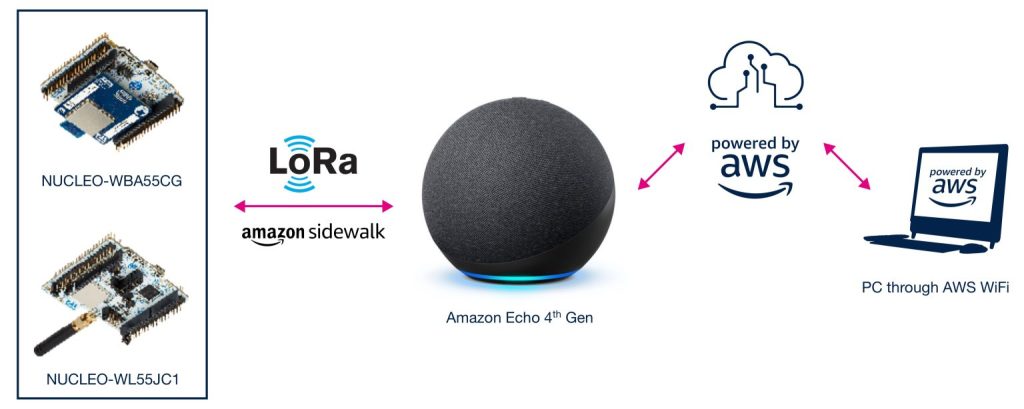 Amazon Sidewalk in one image
What the Amazon Sidewalk qualification means for STM32 developers
The hardware
Amazon Sidewalk in one image
What the Amazon Sidewalk qualification means for STM32 developers
The hardware
As of today, boards featuring the STM32WBA5, STM32WL5, and STM32WLE5 have received the Amazon Sidewalk qualification. The STM32WBA5 offers a Cortex-M33, a Bluetooth LE 5.4 transceiver, and can target a SESIP Level 3 certification, while the STM32WLx5 devices use a Cortex-M4 and a sub-GHz radio. Engineers might choose an STM32WBA55 and an STM32WLE5 to optimize memory usage or an STM32WBA55 and an STM32WL55 for the greater flexibility this configuration affords.
Concretely, the STM32WBA5 talks directly to the Amazon Sidewalk Bridge using a Bluetooth LE connection. And in some instances, that’s all the system needs. However, when networking multiple end nodes over large distances, like in the case of Subeca, it’s necessary to use the STM32WL5 to talk to devices using CSS (Chirp Spread Spectrum, such as LoRa) or an FSK modulation, depending on the distance and frequency range engineers wish to target.
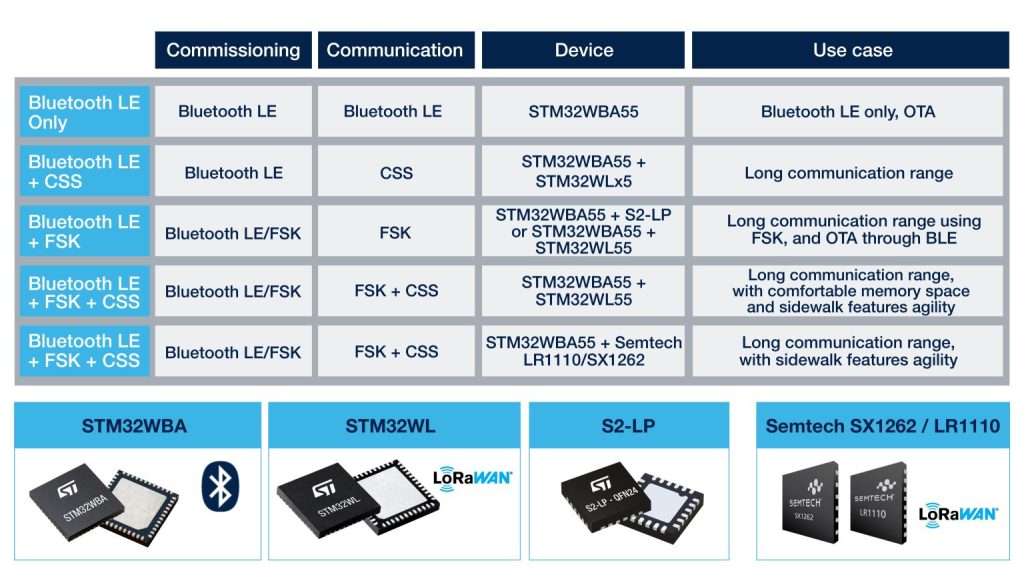 Amazon Sidewalk qualified hardware configurations
The software
Amazon Sidewalk qualified hardware configurations
The software
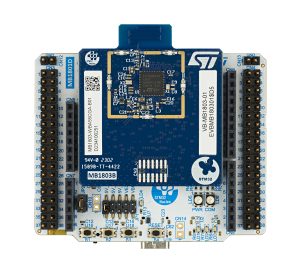 An STM32WBA55 development board
An STM32WBA55 development board
To help developers jumpstart their projects, ST is offering software packages that help implement a network stack that easily interacts with Amazon Sidewalk. This dramatically simplifies the connection to the network, the integration of security features into the application, and the onboarding process. Put simply, while an Amazon Sidewalk guarantees that ST devices will provide the reliability and safety required, it is also a testament to our partnership with Amazon and our desire to help engineers take advantage of this technology.
Real-world applicationsThe qualification and partnership between Amazon and ST means that partners like Subeca can focus on showcasing their expertise and distinguishing their products from the competition instead of spending resources solving networking challenges. As Patrick Keaney, CEO of Subeca, explained,
“Our focus is on innovating and simplifying solutions that solve real-world challenges in the water market. We believe technology like advanced metering, leak detection, and pressure monitoring should be available to all water utilities everywhere, regardless of size. That means wireless connectivity is a must. ST’s STM32WBA5 and STM32WL5/STM32WLE5 wireless microcontrollers enabled us to bring our first Amazon sidewalk-qualified products to the market with great architectural flexibility, performance, low-power consumption in a cost-effective manner with meaningful device longevity and robust and resilient supply chain. Leveraging ST’s expansive device portfolio and ecosystem coupled with great technical support, ST offered us quality technical ingredients, ease-of-use, and portability required to transform our vision into reality.”
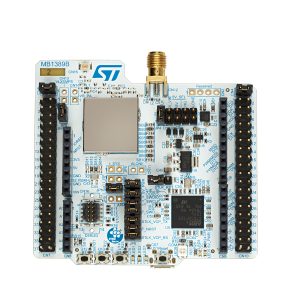 A NUCLEO-WL55JC1
A NUCLEO-WL55JC1
Avnet also showcased an Amazon Sidewalk demo at AWS Re:Invent 2024 featuring an STM32WBA5, an STM32WL55, and Avnet’s IoTConnect platform to handle the onboarding, device management, and data integration with AWS. AVnet’s solution is often a darling at ST Technology Tours because it vastly simplifies the creation of IoT systems by handling some of the most complex development operations. Put simply, the demo is one of the best examples of how ST, Amazon Sidewalk, and a member of the ST Partner Program can come together to make a difference in the operations of a company trying to take part in the IoT revolution.
Why it matters?Interconnecting a myriad of small devices to each other and the Internet has always been the IoT dream. The challenge is that building a new infrastructure from scratch is expensive, and without massive adoption, it will never reach critical mass. Amazon Sidewalk solves this issue by utilizing existing Echo devices and other Bridges connected to a router. By simply leveraging existing installations, the network is already in place. And by enabling product makers and customers to use it for free, it significantly lowers the barrier to entry.
Additionally, Amazon Sidewalk handles a lot of the complexities associated with such a network, from security to over-the-air updates. That’s why Amazon instituted a qualification program. To protect all participants in this ecosystem, Amazon authorizes devices to connect to its network. It also explains the company’s certification program. By qualifying STM32 microcontrollers, Amazon ensures that its partners use trusted devices that will run the network stack reliably and implement security features according to strict standards.
The post Amazon Sidewalk: The first STM32-qualified devices are already making a difference. Check out this customer testimonial! appeared first on ELE Times.

